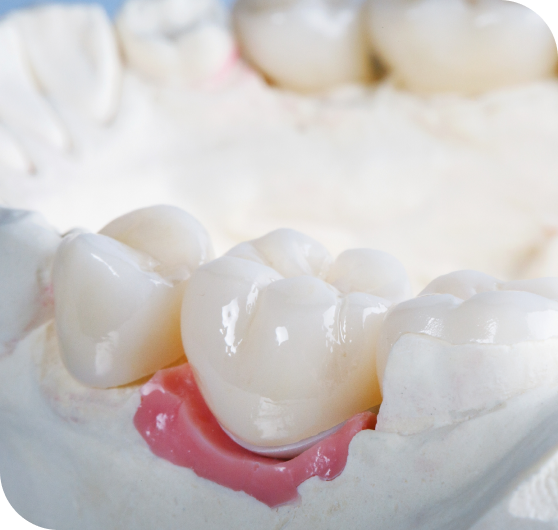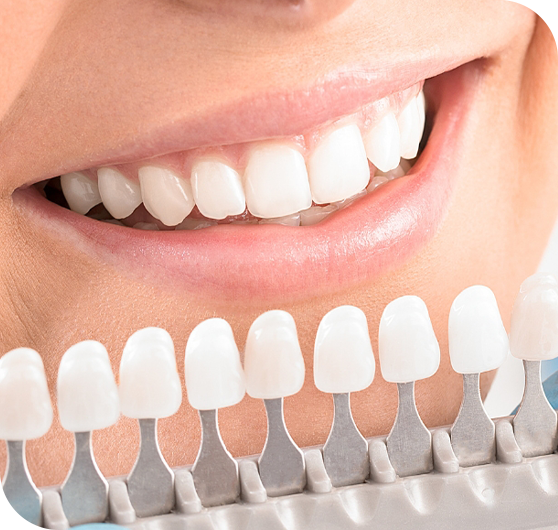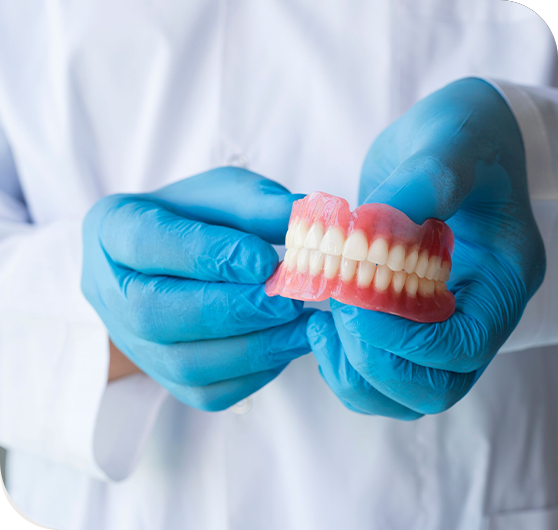Crowns & Bridges
- Home
- Crowns & Bridges
RELIABLE DENTAL BRIDGES AND CROWNS

RELIABLE DENTAL BRIDGES AND CROWNS
Does the gap in your teeth worries you when you smile? Looking for the ideal dentist to help you with your treatment for bridges and crowns? If you’re troubled with missing teeth and are interested in getting a replacement, bridges may be a good option for you. At Supreme Dental , we provide treatment for dental crowns and dental bridges.
Crowns and Bridges Can Transform Your Smile
What are Crowns and Bridges?

Both crowns and most bridges are fixed prosthetic devices. Unlike removable devices such as dentures, which you can take out and clean daily, crowns and bridges are cemented onto existing teeth or implants.

Why are dental bridges and crowns necessary?
Dental crowns may help support the bridge and help to secure it in place as bridges are used to fill in gaps left by missing teeth. They can serve as an alternative to partial dentures too.
If you’re in need of treatment for dental crowns and bridges, then we recommend coming in for a visit at Supreme Dental. By taking a closer look at your oral health, we can recommend you the right plan of action regarding dental bridges in.
How do crowns work?

How do crowns work?
A crown is used to entirely cover or “cap” a damaged tooth. Besides strengthening a damaged tooth, a crown can be used to improve its appearance, shape or alignment. A crown can also be placed on top of an implant to provide a tooth-like shape and structure for function. Porcelain or ceramic crowns can be matched to the colour of your natural teeth. Other materials include gold and metal alloys, acrylic and ceramic. The alloys are generally stronger than porcelain and may be recommended for back teeth. Porcelain bonded to a metal shell is often used because it is both strong and attractive.
Our dentist may recommend a crown to:
- Replace a large filling when there is not enough tooth remaining
- Protect a weak tooth from fracturing
- Restore a fractured tooth
- Attach a bridge
- Cover a dental implant
- Cover a discoloured or poorly shaped tooth
- Cover a tooth that has had root canal treatment.
How do bridges work?

Bridges are commonly used to replace one or more missing teeth. Gaps left by missing teeth eventually cause the remaining teeth to rotate or shift into the empty spaces, resulting in a bad bite. The imbalance caused by missing teeth can also lead to gum disease and temporomandibular joint (TMJD) disorders.

How are crowns and bridges made?

How are crowns and bridges made?
Before either a crown or a bridge can be made, the tooth (or teeth) must be reduced in size that the crown or bridge will fit over properly. After reducing the tooth/teeth, dentist will take an impression to provide an exact mould for the crown or bridge. If porcelain is to be used, your dentist will determine the correct shade for the crown or bridge to match the colour of your existing teeth.
How long do crowns and bridges last?
While crowns and bridges can last for ten years or more, they do sometimes become loose or fall out. The most important step you can take to ensure the longevity of your crown or bridge is to practice good oral hygiene. A bridge can lose its support if the teeth or bone holding it in place are damaged by dental disease. Keep your gums and teeth healthy by brushing with fluoride toothpaste twice a day and flossing daily. Also see our dentist and hygienist regularly for check-ups and professional cleanings.
To prevent damage to your new crown or bridge, avoid chewing hard foods, ice or other hard objects.
Why Us for Dental Bridges and Crowns?
At Supreme Dental, we’re committed to offering high-quality services and care for your dental bridges and crowns treatment. Not only do we believe in safe treatments but also those that are made with your individual needs in mind.

